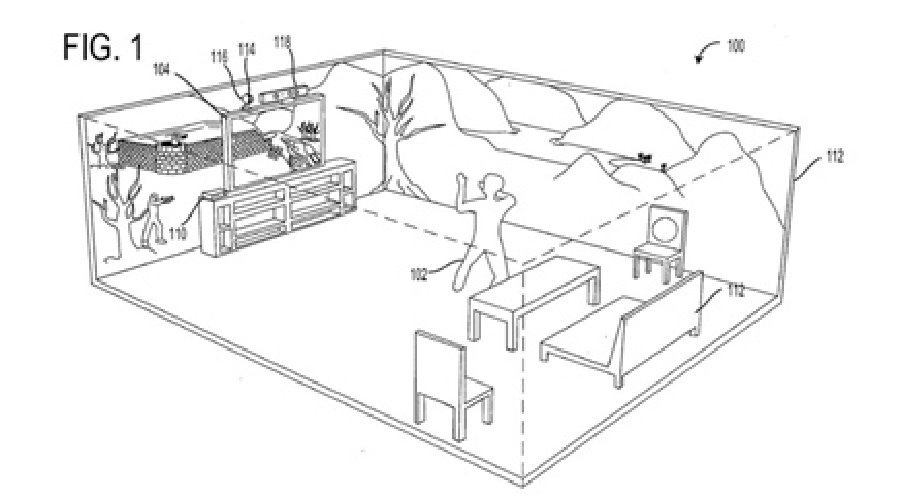Microsoft Shows off Its Incredible IllumiRoom Technology at CES
Another step towards the immersion we all dream of
Microsoft has revealed a proof-of-concept video at CES this week showing off its IllumiRoom research technology.
If you were paying attention to gaming news in September 2012, you’ll have noticed Microsoft published a rather interesting patent. Originally filed in March 2011, the application’s content consisted of plans to add another dimension to gaming by projecting virtual worlds onto the walls of consumers’ living rooms.

The idea works on the principle that content seen in your peripherals needn’t have the level of detail seen in HD TVs, and can therefore be represented via projections onto the environment around the screen.
While we’re not sure how Microsoft has dealt with projection placement (surely a huge space is needed?) the issues relating to distortion caused by objects and room shape appear to have been solved using the Kinect’s clever understanding of the third dimension.
If for some reason you’ve ever tried to project onto a corner or two, you’ll know exactly what we’re talking about. Keystoning gets around the issue of misalignment with a single flat surface, but throw in a bookshelf, chimney breast, frozen donkey or whatever else you’ve got lying around the living room and you’ve got a nightmare of hellish game distortion.
The IllumiRoom (working title?) tech uses the Kinect to go full-on science fiction, scan your room with its multiple cameras, detect its unique angular properties and then distort the image accordingly. The result? Marcus Fenix doesn’t look like Max Headroom after suffering a hideous car accident. Freaking. Awesome.
Microsoft has been wise enough to understand that all this seems a) a little far-fetched and b) rather difficult to envisage. To deal with this, the company has created an impressive video (see below) to show off its research team’s progress so far. Before you call out “IT’S FAKE U N00B111!!!”, apparently this video isn’t the result of post-production trickery and is instead a real-life recording of Microsoft’s proof-of-concept. So there.
While it isn’t exactly the Holodeck we were hoping for, the effect is pretty darn cool and notches up the immersion level that little bit further. The interesting thing you’ll observe in the video is that it’s mainly highlights, explosions, sparks and outlines instead of fully-realised graphics. Expanding on what we said earlier: the effect relies on the fact your peripherals will be stimulated with these more subtle additions.
How long it will take technology to advance far enough to include a higher level of detail in your room is for time to tell. Recent years have shown that affordable consumer hardware struggles to cope with the capabilities of the graphics, physics and game engines produced by software development companies.
As always, console development relies on learning the intricacies of a console’s tech, just look at Beyond: Two Souls or The Last of Us; two games that look utterly stunning ready for release right towards the last part of the current gen’s console cycle.
We expect to be plugging our brains into Max & the Magic Marker in no time. Expect an IllumiRoom update at the CHI 2013 event in Paris come April 27.
